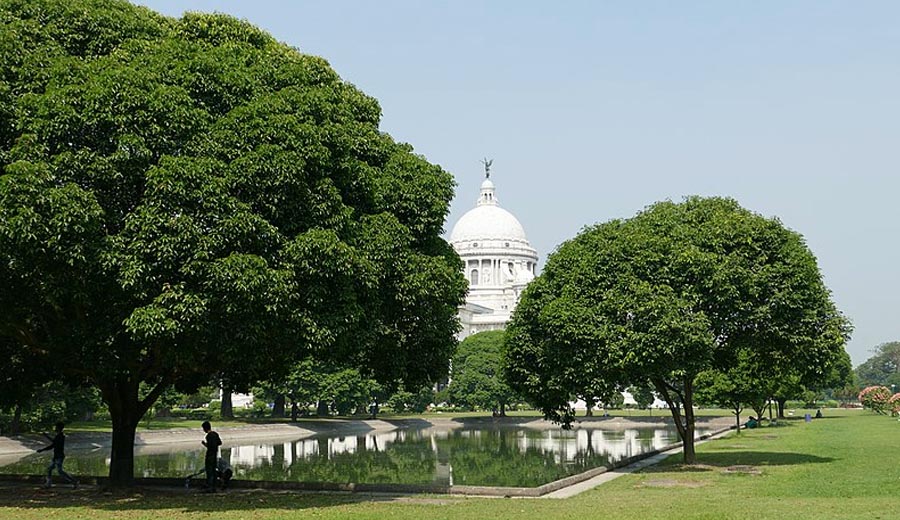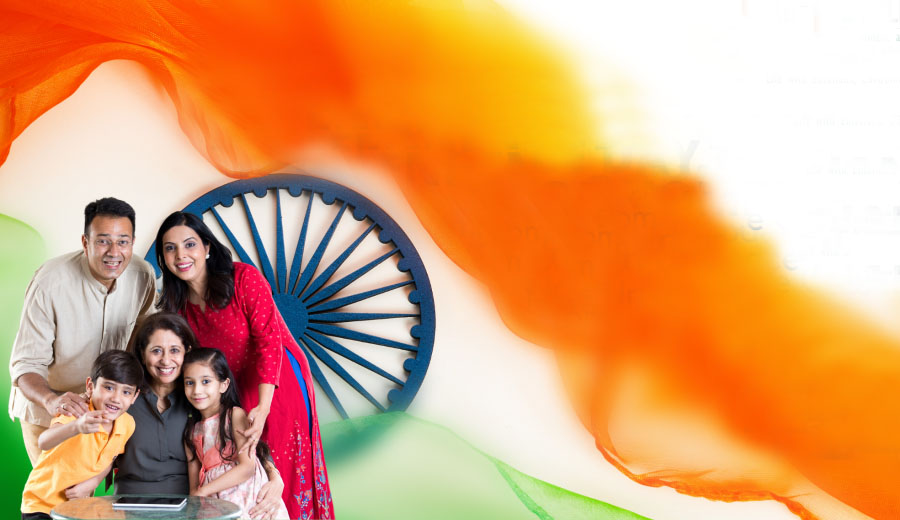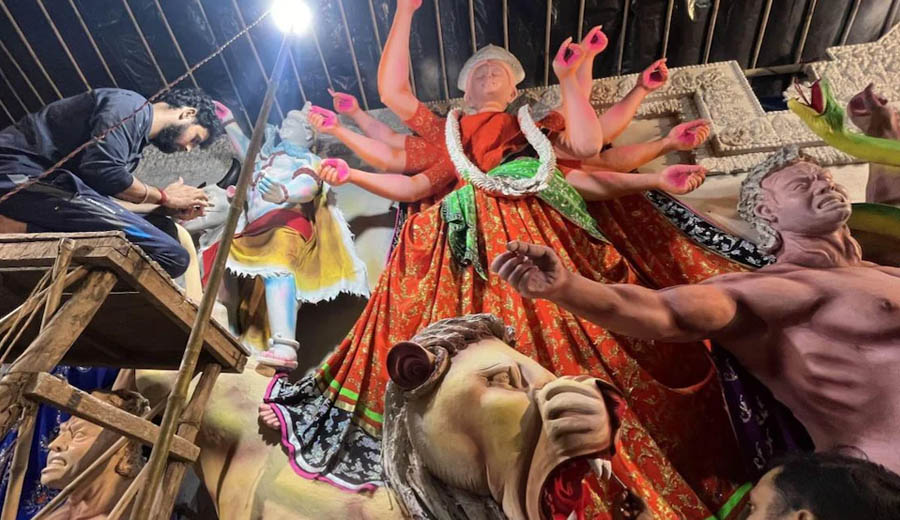Mrs. Sandhya Chatterjee has a habit of going for a morning walk but she finds it quite difficult to stick to her routine during the summer. She is a senior citizen and her doctor has told her to take a walk every morning but Kolkata weather becomes considerably hot even before the onset of Baishakh.
Any outdoor activity is extremely trying during this season.
But Surajit Biswas has to go out in the merciless sun and do his duty. He cannot have the luxury of staying indoors. Surajit is a traffic sergeant with Kolkata Police and a large part of his day is spent on the road under the sun.
Even for Ruchi who goes to school every morning at about 9.30, it is tougher than any exam she faced. Moreover, sitting a whole day in a non-AC classroom is no less trying.
For the last few years, Kolkata has been experiencing heat-wave-like conditions even before the summer sets in. Every year seems to be hotter than the last.
Kolkata Beats Delhi in Heat Index
The Centre for Science and Environment (CSE), New Delhi, said its analysis of heat trends had calculated Calcutta’s seasonal maximum heat index as 50°C, compared with Delhi’s 45.6°C.
The heat index is the apparent temperature the body feels when humidity is combined with air temperature. To determine the heat index, air temperature, and relative humidity are taken into consideration.
A heat index value between 41°C and 43°C is “dangerous” while 54°C and higher is “extremely dangerous”, the CSE said.
The analysis has also underlined concerns that parts of cities serve as “heat islands” hotter than surrounding regions.
Another recent study by Cambridge University revealed that Bengal is second on India’s heat index vulnerability list, which puts the state in “extreme danger.”
Last year, the city witnessed maximum temperatures fluctuating between 40°C and 41°C during the second/third week of April. It is expected to be severely hot this year too, the Met Department warned.
Is there a particular reason why this happens?
Any special cause?
Let us discuss.
A Few Reasons for Extreme Heat in Kolkata
Kolkata has always been a city with a moderate climate but something weird has been happening for the last couple of years.
Experts attribute the warm spell to the scorching dry northwesterly wind. Hot air from northwest India has been traveling to Kolkata and the adjoining districts resulting in severe hot and dry weather. Suddenly, the typical humid Kolkata weather is absent and loo-like occurrences are quite common during the day.
Besides, Kolkata has limited openness and heat tends to get trapped because of various hard and dark surfaces. Hot air cannot dissipate easily because of poor air flow.
The problem is that the city’s open space is shrinking to an alarmingly low level in the last decade. According to the World Health Organisation (WHO), a city must have a minimum of 15% open space.
A study conducted by the Society for Environment and Development revealed that Kolkata had slightly over 13% open space even in 2000.
A study about a decade later stated that the open space in the city reduced rapidly and now only 5.5%.
At a meagre 0.67 sq.m. open space per person in Kolkata, it is one of the cities with inadequate green cover. WHO recommends at least 9 sq. m. per city dweller.
Other Indian cities are far ahead of Kolkata. In comparison, Mumbai and New Delhi at 18% and 19.09% have much higher open spaces. The national average stands at 19.49%.
Another major cause of extreme summertime weather conditions in Kolkata is the considerable depletion of forest cover. Between 2011 and 2021, Kolkata registered a 30% decline in forest-tree cover, according to India State of the Forest Report, 2021.
Environmental activists feel the scene in Kolkata is a result of large-scale tree felling for development projects like flyovers, Metro, other construction activities, and frequent cyclones. They believe enough plantations are not done to compensate for the loss.
Poor green cover is surely responsible for the high heat index in Kolkata.
We Need to Act Fast
Kolkata must act fast so that the situation is reversed to some extent. If we take the following steps to increase the green quotient then we will; enjoy cooler Kolkata summers.
Intensive Reforestation
We must develop a more effective reforestation strategy and implement it.
Special initiatives should be undertaken to plant saplings in strategic locations so that they don’t have to be cut down when they are full-grown trees in the next 15-20 years to make way for new infrastructure. Also, roads and highways that are not under the ‘green cover’ should be brought under the reforestation drive.
The KMC’s various initiatives to protect trees in Kolkata is very commendable in this context.
Reduce Vehicle Usage
Reducing vehicle usage is a tough task in Kolkata but surely various innovative steps can be taken.
Less usage of fuel-powered vehicles reduces the carbon footprint and though this is practised in some of the ’greener’ Indian cities, Kolkata is quite low in using battery or CNG-powered vehicles. There is massive scope to improve the situation in this respect.
Here are some steps that can be taken to discourage people from using cars too much:
- Ensure protected paths, racks, and parking for riders
- Enhance on-road security and cleanliness to encourage people to walk
- Encourage the use of bicycles for short travel
- Create awareness programs and open dialogues with the citizens
- Extend the Metro network further
Cut Down Greenhouse Gas Emissions
Reduction of greenhouse gases will surely go a long way to contain the heat.
There is a huge case for:
- Installing more solar-powered electrical lights and appliances. Gated communities can afford to install solar units with the added benefit of net metering
- Better battery charging infrastructure to support more electric vehicles
- Higher use of energy-efficient appliances by homeowners, and the industrial sector
- Painting the roof white as it reflects the daytime heat and cools the interiors
Create More Green and Open Spaces
Creating more green and open spaces will act as heat sinks in a city where such spaces are depleting fast.
Some of the ways how more green and open spaces can be created are mentioned below:
- Create more citizen’s parks, playgrounds, and waterbodies
- Encourage homeowners to keep gardens even in apartments
- Take community initiative to protect and maintain green and open spaces
- Reward/encourage real estate developers to create more greenery
We all want Kolkata to have a better and greener future. While we want fast urban development, we do not want that at the cost of the environment.
Let us all join hands to save our environment.





